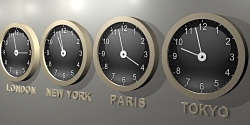Different Forex Trading Sessions Explained
Forex markets are open around the clock, and while technically they are open only 5 days in a trading week, in reality, what happens over the weekend matters for the Monday’s opening as well. Therefore, we can safely say that this is a 24/7 market, and attention should be paid to each and every detail that can influence quotations on currency pairs: technical and fundamental analysis, geopolitical factors, elections, natural cataclysms, etc.

| Broker | Bonus | More |
|---|
Forex Trading Sessions and Their Characteristics
There are three trading sessions on each and every trading day, and their order follows the sun: The Asian, London, and the New York sessions. It doesn’t mean, though, that this is the order of their importance. The London session is by far the most important, followed by New York, and then the Asian session is the last one when it comes to the importance of the different Forex markets.
The London Session
As mentioned earlier, this is the key trading session in a trading day, and most of the time the close of the London session brings volatility down, and ranges start to dominate markets. The London session is characterised by news of many important economic events being released, and the first thing traders do is to check what happened in the Asian session and prepare for the session ahead. Important economic events in the Eurozone and the United Kingdom make the London session a volatile one, and this is especially true when the New York session starts. For a few hours, the two trading sessions are overlapping and this makes for the most active trading times in a trading day. This is when moves are being made, fortunes are made and lost, and trends resume or start. From a trader’s point of view, all eyes should be on London’s fix, and on the bigger picture if trades are being taken from a technical analysis point of view. Scalping is not recommended in the London session, as prices move quite a lot. Because of this, swing trading or even investing for the long term should do the trick for profitable trading.
The New York Session
This trading session starts with a bang, as right after the opening, important economic releases from the United States impact on prices. The economic calendar in the United States is the busiest one in the world due to the key nature of the dollar, and therefore a lot of data is released on a daily/weekly basis. After the New York session has started and the London fix is over, there is little to do but watch the US equity markets, as these are clearly correlated with the Forex market. Consider just that the JPY pairs, and the USD/JPY in particular, are strongly correlated with the US markets, as higher equities lead to lower JPY, and vice versa. Except when the FOMC Statement or the FOMC minutes are due, expect the second half of the New York session to be a relatively calm one, providing equities are not making a big move. Scalping trading techniques can be used at this time with an oscillator to show overbought and oversold levels at which to enter and exit the market.
The Asian Session
This session is a ranging one something like 90% or maybe even more of the time, especially during summer trading. Most currency pairs settle in small triangles or flags, or in any case consolidation areas that are suitable for scalping on the short to very short timeframes, like the 5-minute and even the 1-minute chart. Again, using an oscillator to find out overbought and oversold areas should do the trick for profitable trading, as well as trading based on bullish or bearish divergences on these shorter timeframes. The Asian session is usually governed by algorithmic trading, as before settling down for the day, London and New York traders instruct robots to buy or sell on breaks. If breaks do not happen, then the price will simply stay in small ranges, and it is common enough that the EUR/USD, for example, moves only a few tens of pips during this session. All in all, what is worth remembering from this article is that Forex trading goes on around the clock, with new trends starting most likely during the London or the New York sessions when the most important economic news is scheduled to be released. This doesn’t mean that the Asian session should be taken for granted, though. When the Bank of Japan holds its regular monetary policy meeting, market watchers look very carefully at the Yen pairs and their implications for the overall Forex market.
Knowing when the market is likely to move and, more importantly, what to expect from a trading session, should help a trader to calibrate their market expectations and their trading style accordingly.
Other educational materials
- What is Forex Trading?
- What is a Currency Pair?
- Majors and Crosses – How to Trade Them?
- Leverage and Margin Requirements
- What is a Margin Call?
Recommended further readings
- “The dynamics of international equity market expectations.” Brennan, Michael J., H. Henry Cao, Norman Strong, and Xinzhong Xu. Journal of Financial Economics 77, no. 2 (2005): 257-288.
- Utilizing artificial neural networks and genetic algorithms to build an algo-trading model for intra-day foreign exchange speculation. Mathematical and Computer Modelling Evans, C., Pappas, K., & Xhafa, F. (2013)., 58(5), 1249-1266.


